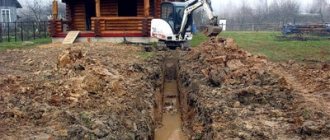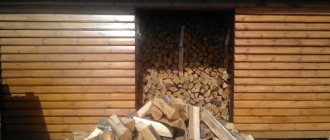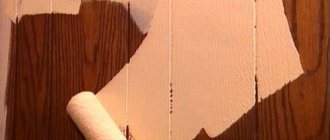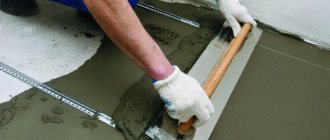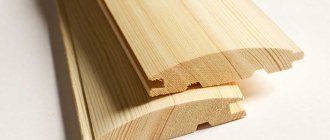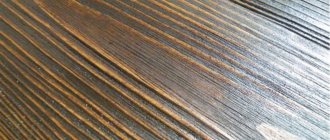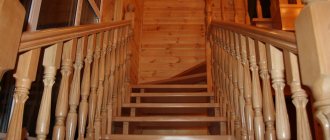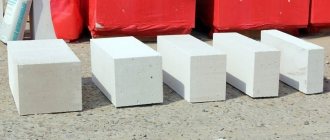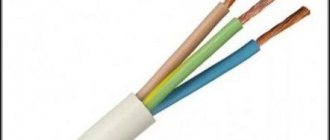Wood is a material of organic origin and always contains some amount of moisture. According to its properties, it refers to limited-swelling colloidal capillary-porous bodies that have hygroscopic properties, that is, the ability to release moisture into the air or absorb it from the surrounding air.
In wood, a distinction is made between free, or capillary, moisture located in the cavities of the cells, and bound, or hygroscopic, moisture located in the thickness of the cell walls. The amount of free moisture, which has only a mechanical connection with wood, depends on the volume of voids in a particular wood species and on its volumetric weight. The lower the volumetric weight, the more voids there are in the wood - accordingly, the more free moisture it can hold. The amount of hygroscopic moisture in the physical-mechanical connection depends little on the type of wood and averages 30% at a temperature of 20 °C.
Where to look for moisture in wood?
It is known that humidity serves as an indicator of the quality of wood and has a significant impact on its physical and mechanical properties, as well as on the quality of the finished product. The difficulty of measurement lies in the fact that the physical quantity, which is the source of information about moisture, is influenced by many other parameters of wood. This makes it difficult to obtain accurate results. Some of these parameters can be measured and taken into account by introducing corrections. Measuring others: wood density in an absolutely dry state, temperature, fiber orientation, structure is no less difficult than measuring humidity itself.
Existing methods can be divided into direct ones, in which the material is directly separated into dry matter and moisture, and indirect ones - they allow one to measure another quantity functionally related to the moisture content of the material.
Introduction
Not everyone always has a moisture meter at hand, and as usual, when you don’t have one, you need to determine the water content in the wood. In other cases, this problem arises for craftsmen at home, when repairing or creating furniture.
Working as a technologist at a large woodworking plant, you begin to determine the moisture content of wood even without a moisture meter; as they say among experts, a “feel” is developed.
In fact, this is not a little thing, but just a set of rules and little secrets for determining the water content in wood by sight and touch. Let me share with you some tricks and subtleties in this matter, because they can be so useful when you don’t have a hygrometer at hand.
Weight method
The direct method includes the weight measurement method, or the drying method. It is considered the most accurate in the woodworking industry. Its essence is to directly determine the amount of moisture removed from wood by weighing the sample before and after final drying in a special drying cabinet at a temperature of 103 ± 2 ° C). Measurements are carried out in accordance with GOST 16483.7-71.
Wood moisture content is the percentage ratio of the mass of water mw contained in the sample to its mass in an absolutely dry state m0. It is expressed by the following relationship:
Under certain conditions, this method can provide very high accuracy, but it is not always possible to create them in production. It can be recommended if a wood moisture meter is not available. Along with the advantages, this method also has disadvantages. The main one is the excessive duration of the measurement process, while the use of modern high-performance drying chambers requires fairly efficient control of the drying process. Another disadvantage is the impossibility of continuously measuring the moisture content of the material being dried. In addition, after this, the wood samples become practically unsuitable for further use.
To quickly and continuously measure the moisture content of a material in a process stream, indirect determination methods are used, based on the measurement of a physical parameter dependent on humidity. Electrical measurement methods are the most widely used.
Possible errors, humidity correction
Misunderstandings arise at various stages after logging.
For example:
- The warehouse ignored that the logs were in the water.
- Different tree species were treated equally.
- The drying technology could have been violated, the drying times could not have been met, or the rules for aerating the timber could not have been followed.
- Another reason is excessive moisture content in the air in the warehouse and (or) a leaking tent roof.
Sellers of finished timber sometimes deceive buyers by offering them under-dried or over-dried products. Such lots are sold at a reduced price, which further encourages purchase.
The buyer decides to save on moisture testing, begins construction or assembles a piece of furniture without preparation. Finally, mistakes are possible if moisture content is not determined correctly.
Dry the underdried
Even if the buyer decided to save money and purchased damp, undried lumber, it is possible to finish drying it on his site.
To do this, the boards need to be laid correctly, with gaps made to ensure air exchange. It is also necessary to protect the workpieces from rain by covering them with film, and to build a roof for the timber.
You can dry wood only for external structures. If you plan to do carpentry work, the workpieces need to be dried to 5-8%. To do this, you can either contact workshop specialists or use a home workshop.
For proper drying, you need to properly lay the workpieces and periodically treat the board with a fan heater. If you plan to do a lot of work or want to save money, you can purchase an infrared dryer.
Infrared savior
In most cases, an infrared oven can solve the problem. Infrared rays heat the water contained in the fibers, which then evaporates.
It is important to set the correct temperature, this will preserve the structure of the wood and fibers. This type of drying using an infrared gun can also be carried out outdoors.
The advantage of such a machine is its low cost (compared to a drying cabinet), mobility, high efficiency, different operating modes, ease of operation and maintenance.
Conductometric method
Rice. 1. Dependence of electrical conductivity on wood moisture content
Wood in a dry state is a dielectric; its electrical conductivity increases sharply with increasing humidity to the limit of hygroscopicity. With a further increase in humidity, the electrical conductivity increases slowly, and at a level of 80-100% it becomes constant (Fig. 1).
To measure wood moisture content under industrial conditions, electrical conductometric moisture meters are usually used, in which the measurement is based on the dependence of wood resistance on its moisture content. They are simple in design, quite reliable in operation, and can be portable (with an autonomous power source). The moisture measurement limits for pine wood are 7-22% in the first range and 22-60% in the second. The general view of the conductometric moisture meter is shown in Fig. 2.
When measuring wood moisture content with an EV-2K electric moisture meter, it is necessary to take into account that the measurement result is influenced by the position of the sensor needles in the wood and, most importantly, its temperature. Therefore, in order to determine, for example, the current moisture content of lumber during the drying process, it is necessary to open the chamber, take a pre-laid control sample from the stack and measure the moisture content only after it has cooled to room temperature. It should be noted that modern moisture meters take into account a correction for the temperature of the wood.
Rice. 2. Electric moisture meter EV-2K for determining humidity
Basically, the EV-2K moisture meter is used for manual measurement of the final moisture content of dried lumber, as well as for selecting assortments of approximately the same moisture content, for example, for gluing. The conductometric method for measuring wood moisture is widely used in process control systems in drying chambers. The role of sensors is performed by two-electrode probes (Fig. 3).
Rice. 3. Electrodes for measuring wood moisture content
They are installed directly into the wood in different places in the drying chamber. Humidity values from all sensors enter a single measuring unit, where analysis and further issuance of commands to the central processor for controlling the drying process takes place.
How to dry lumber
Even if the moisture content of the lumber you are going to purchase is higher than the permissible value, this is not a reason to refuse the purchase. The situation can be improved. In this case, it is not even necessary to resort to chamber drying. Moreover, drying wood under natural conditions is sometimes more preferable. The main rule is to follow all the rules for storing lumber .
It is necessary to bring the logs to the desired condition in a specially equipped place for this purpose. Be sure to use in a draft or well-ventilated area. The tree must be reliably protected from precipitation and aggressive sunlight. The latter is extremely important, since under the sun one side of the logs (beams) will dry faster, while the other will remain more moist. As a result of such storage, the wood will simply crack and lose its shape .
For proper drying, boards must be placed on a specially equipped platform. We lay rough boards across wooden beams 50 centimeters thick. The distance between the beams must be at least one and a half meters, otherwise the lumber will sag. It is better to take rough boards from spruce, for example. Thickness is approximately 4 centimeters.
Important! Under no circumstances should dry and wet lumber be placed in the same pile . Wood has the ability to absorb moisture from the environment, so as a result, already dry boards will simply become damp.
Depending on the weather, time of year, thickness of the boards and the initial percentage of humidity, atmospheric drying can take an average of forty days.
Dielcometric method
The operating principle is based on the correlation dependence of the dielectric constant of a material on its moisture content at positive temperatures. The MG4D moisture meter is designed for measuring the moisture content of lumber and wooden parts using the dielcometric method in accordance with GOST 21718-84 and GOST 16588-91. It has 15 calibration dependencies for the following types of wood: pine, larch, oak, birch, beech, aspen, spruce, poplar, linden, ash, cedar.
This model is perfect for manually measuring wood moisture content, while the device does not destroy its structure (unlike needle moisture meters). It can be used for single moisture measurements, as well as for series of averaging and continuous measurements to detect areas of high moisture content.
Text: Nikolay Ladeishchikov, Director of Uraldrev-SCM LLC
The article was published in the journal Forest Complex No. 5 2021
Reviews
It is important to monitor the quality of purchased timber, as well as compliance with the rules of working with wood.
The buyer of Thunder2000 (Taganrog) laid a subfloor on the foundation. At the same time, the boards were not dried, and there was water in the house due to rain. As the buyer says, “the water has not yet evaporated from the house; fluff has appeared on the forest in some places.” To protect yourself from mold, you need to quickly close the house - windows, doors, and then dry the room with a mobile air conditioner. Naturally, such a floor will not last long.
Another buyer (sashavitas, Uman) encountered poor quality service. A small workshop sold him a round table made of undried pine, telling him not to put it in a hot room to avoid drying out.
The buyer claims that he placed it in the kitchen at the dacha, where the temperature is about 15 degrees. However, the table still began to dry out. This table needs to be returned to dry. Experienced craftsmen advise purchasing logging materials, materials and finished products only from trusted companies.
Purchasing timber is a responsible step! It is important to take into account the condition of the wood and its moisture content. Compliance with standards: 15-20% for construction work, 5-8% for carpentry - will save money on repairs. This tree will last a long time!
